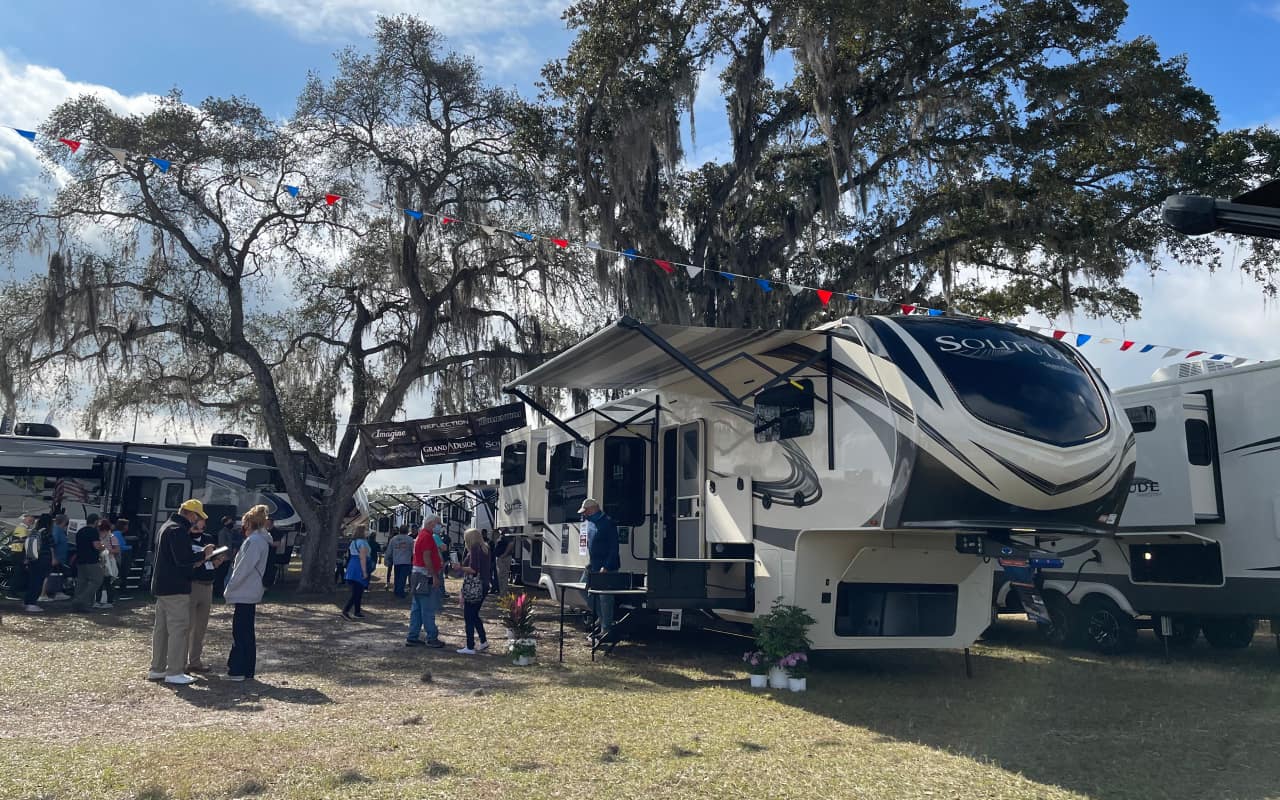
Tips from Lazydays expert Andy Dietz on Protecting Your Motorhome
Rewritten by Joseph Garnett, Jr. - From the Archives
May 1, 2019
Hurricanes can pack wind speeds of over 160 mph and unleash more than 2.4 trillion gallons of rain a day; so if your summer travel plans include spots that are vulnerable to this kind of weather, it’s important to know how to prepare yourself and your motorhome or towable RV for the storm’s impact.
There are three stages of preparation you should have in place when you plan to travel to a RV destination may include severe weather. Planning in advance will help you quickly enact your plans.
Before You Arrive at Your Destination
- Plan an evacuation route.
- Select an elevated campsite away from large trees.
- Make a video or take photographs of everything inside your RV.
- Purchase waterproof document holders for important papers.
- Check your RV insurance to make sure you’re covered for hurricanes.
- Identify where you’ll store your towable RV or Motorhome should you need to evacuate. Also, make sure it’s not in a low-lying area that’s prone to flooding.
When the Storm is Approaching
- Prepare an emergency kit with potable water, non-perishable foods and other personal items you may need, like prescription medications.
- Fill containers with water for hygiene needs like brushing your teeth and flushing the toilet. If you have a bathtub, fill it as well.
- Purchase batteries, garbage bags, tarps (which come in handy for patching the roof), a battery-operated radio, an oil lamp and oil, and even a small window air conditioner, which can run off your generator and allow you to sleep better.
- Fill the fuel tank and check your fluids. Inspect the tires and windshield wipers. If you have a grill, make sure you have enough propane.
- Place valuable papers in waterproof containers or plastic zipped bags.
- Consider boarding up the widows with Plylox®, which allows you to easily attach plywood and can be purchased at a local home store.
- Make sure your fire alarms and carbon monoxide detectors have fresh batteries installed.
- Perform a safety check of the entire vehicle. Make sure you know where the transfer switch is for the generator, so you can isolate the electricity from the rest of the power grid to prevent electrical shocks.

If You’re Advised to Evacuate
- Avoid driving through water. It may stall your engine and cause irreparable engine damage. Moving water can sweep away your vehicle, and roads covered by standing water are prone to collapse.
- Remove any nearby tree branches or other items that may become airborne.
- Empty your motorhome’s holding tanks, turn off propane cylinders and cover the regulator.
- Cover your vents and the air conditioning unit and tie down travel trailers.
- Secure all items located outside your RV, including lawn chairs, tables, grills, etc. Even a dustpan can be a lethal weapon in 100-mile-an hour winds.
Most importantly, it’s not worth staying to ride out a hurricane or tropical storm. If you’re advised to evacuate, do so quickly. Hurricanes can be frightening, but following these easy steps will ensure you’re prepared to protect yourself and your RV.
If you have any further questions please, ask one of our service experts at one of our several locations throughout the US. You can also contact us to speak with an RV specialist.
Editor's note: The RV Authority welcomes your input. If you have an idea for a blog article or would like to write and submit an article about your RV adventures, please click here to email us your suggestions or questions.



